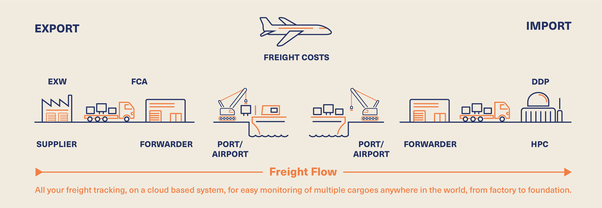As the global e-commerce landscape continues to evolve, the connection between Alibaba and Amazon has become increasingly significant for businesses seeking a diverse range of products to sell on the Amazon platform. This partnership offers a unique opportunity for sellers to source products from Alibaba, a prominent Chinese e-commerce giant, and seamlessly list and sell them on Amazon, the world's largest online marketplace.
Here are key details about the Alibaba-Amazon connection:
- Global Sourcing: Alibaba serves as a massive online marketplace connecting international buyers with suppliers, offering a vast array of products. Many Amazon sellers turn to Alibaba to find manufacturers and suppliers for their inventory needs.
- Product Variety: Alibaba's platform boasts a diverse range of products, from electronics and apparel to machinery and raw materials. This variety enables Amazon sellers to explore and source products that align with their business strategies and market demands.
- Competitive Pricing: One of the key advantages of sourcing from Alibaba is the potential for competitive pricing. Sellers can often find cost-effective manufacturing and production solutions, allowing for better profit margins on the Amazon marketplace.
- Quality Assurance: While price is a significant factor, Alibaba also provides tools for sellers to assess the reliability and quality of suppliers. Reviews, ratings, and direct communication with suppliers contribute to a more informed decision-making process.
- Streamlined Import to Amazon: To streamline the process, many sellers choose to ship products directly from Alibaba suppliers to Amazon warehouses. This approach reduces handling and storage time, expediting the availability of products for Amazon customers.
- Dropshipping Opportunities: Some sellers leverage the Alibaba-Amazon connection for dropshipping, where products are shipped directly from the supplier to the end customer. This model minimizes inventory costs and logistics complexities.
Understanding the dynamics of this connection empowers sellers to explore new avenues for product sourcing, enabling them to stay competitive in the dynamic e-commerce market. The seamless flow of goods between Alibaba and Amazon is a testament to the interconnected nature of the global e-commerce ecosystem, creating opportunities for businesses to thrive and expand their reach.
Understanding Seamless Logistics

Seamless logistics plays a pivotal role in the e-commerce supply chain, ensuring the efficient and timely movement of products from Alibaba to Amazon. This intricate process involves various stages, each requiring careful consideration to optimize the overall supply chain. Let's delve into the key aspects of understanding seamless logistics:
- Supply Chain Integration: Seamless logistics begins with the integration of the supply chains of both Alibaba suppliers and Amazon. This integration involves coordination between manufacturers, suppliers, shippers, and Amazon's fulfillment centers to create a cohesive and interconnected system.
- Inventory Management: Efficient inventory management is crucial in ensuring that products are readily available for shipment. Sellers need to strike a balance between maintaining optimal stock levels and avoiding overstock situations, which can lead to increased storage costs.
- Order Processing: Streamlined order processing is key to minimizing delays. Automation of order fulfillment processes, from receiving customer orders to shipping requests to Alibaba suppliers, enhances speed and accuracy.
- Shipping Strategies: Choosing the right shipping strategies is vital for seamless logistics. Sellers can opt for air or sea freight, depending on factors such as cost, urgency, and the nature of the products being transported. Additionally, fulfillment services, including Amazon FBA (Fulfillment by Amazon), provide an efficient way to manage inventory and shipping.
- Real-time Tracking: Implementing robust tracking systems ensures real-time visibility into the movement of products. This transparency enables sellers to monitor shipments, anticipate potential issues, and provide customers with accurate delivery information.
Also Read This: Enjoy Likee Videos Offline With This Likee Videos Download Free Tool
Choosing the Right Suppliers on Alibaba
When venturing into the world of e-commerce and considering shipping products directly from Alibaba to Amazon, selecting the right suppliers is a critical step for success. The reliability and quality of your suppliers can significantly impact the overall customer experience and the success of your business. Here's a comprehensive guide on how to choose the right suppliers on Alibaba:
- Research and Due Diligence: Conduct thorough research on potential suppliers. Look for information on their reputation, history, and customer reviews. Utilize Alibaba's platform features that showcase supplier ratings and transaction history.
- Communication: Establish clear and effective communication with potential suppliers. Inquire about their production capabilities, lead times, and any customization options. A responsive and transparent supplier is more likely to be reliable in the long run.
- Verification and Certification: Check for any certifications or verifications that the suppliers may have. Certifications can be indicative of adherence to quality standards and manufacturing practices. Alibaba often provides information about suppliers' certifications on their profiles.
- Samples and Prototypes: Request samples or prototypes of your products before committing to larger orders. This allows you to assess the quality of the products firsthand and ensures that they meet your specifications and standards.
- Minimum Order Quantities (MOQs): Clarify the minimum order quantities required by the suppliers. Balancing your inventory needs with MOQs is crucial for managing costs and avoiding excess stock.
- Payment Terms: Clearly understand the payment terms offered by suppliers. Be cautious of suppliers demanding large upfront payments. Negotiate terms that align with your financial capabilities and industry standards.
- Escrow Services: Utilize Alibaba's escrow services for secure transactions. Escrow helps protect both buyers and sellers by holding funds until the agreed-upon conditions are met, providing a level of security for the transaction.
Also Read This: Teams Screen Share: Sharing Screen on Microsoft Teams on Mac
Shipping Options and Strategies
When shipping products directly from Alibaba to Amazon, selecting the right shipping options and strategies is crucial for ensuring timely and cost-effective deliveries. The choice between air and sea freight, as well as the utilization of fulfillment services like Amazon FBA, can significantly impact your logistics and overall business operations. Here's a detailed exploration of shipping options and strategies:
- Air Freight: Opting for air freight is a quick and efficient way to transport products from Alibaba suppliers to Amazon warehouses. While it is generally more expensive than sea freight, the shorter transit times can be advantageous, especially for time-sensitive or high-value products.
- Sea Freight: Sea freight is a cost-effective option for shipping large quantities of goods. Although it has longer transit times compared to air freight, it is a preferred choice for bulk shipments. Careful planning and coordination are necessary to account for the extended shipping duration.
- Fulfillment by Amazon (FBA): Amazon FBA is a popular fulfillment service that allows sellers to store their products in Amazon's warehouses. Amazon takes care of order processing, packing, and shipping. Utilizing FBA not only streamlines logistics but also provides access to Amazon's vast customer base and Prime shipping benefits.
- Hybrid Strategies: Some businesses adopt hybrid shipping strategies, combining air and sea freight or a mix of fulfillment methods. This approach allows for flexibility and optimization based on factors such as product demand, cost considerations, and delivery speed requirements.
- Customs and Duties: Understanding and planning for customs and duties is essential when shipping internationally. Clear communication with suppliers, proper documentation, and compliance with customs regulations help prevent delays and additional costs.
Also Read This: International Connect: How to Call Flipkart Customer Care from Outside India
Customs and Regulatory Considerations
Navigating customs and regulatory processes is a crucial aspect when shipping products from Alibaba to Amazon. Understanding and complying with the regulations of both the exporting country (often China, in the case of Alibaba) and the importing country (Amazon's location) is vital for preventing delays, avoiding penalties, and ensuring a smooth customs clearance process. Here's an in-depth exploration of customs and regulatory considerations:
- Documentation: Accurate and complete documentation is fundamental for customs clearance. Ensure that all required documents, including commercial invoices, packing lists, and certificates of origin, are prepared and presented in accordance with the regulations of both the exporting and importing countries.
- Harmonized System (HS) Codes: Assigning the correct Harmonized System codes to your products is essential for customs classification. These codes help determine the applicable customs duties, taxes, and regulatory requirements. Work closely with your suppliers to accurately identify the HS codes for your goods.
- Compliance with Import Restrictions: Be aware of any import restrictions or prohibitions that may apply to your products. Different countries have varying regulations on certain goods, and adherence to these restrictions is critical to prevent customs issues and legal consequences.
- Importer of Record (IOR): Clearly define the Importer of Record, which is the entity responsible for ensuring compliance with customs regulations. This can be the seller, the buyer, or a designated third party. Understanding the IOR's responsibilities is crucial for a smooth customs process.
- Tariffs and Taxes: Research and understand the applicable tariffs and taxes in both the exporting and importing countries. Consider the potential impact on your overall costs and factor these expenses into your pricing strategy to avoid unforeseen financial burdens.
Also Read This: Chatting 101: Initiating Live Conversations on AliExpress
Tracking and Transparency
Ensuring robust tracking and transparency mechanisms in the logistics process is essential when shipping products directly from Alibaba to Amazon. This not only enhances the overall customer experience but also enables businesses to proactively address any issues that may arise during transit. Let's delve into the key aspects of tracking and transparency:
- Real-Time Shipment Tracking: Implementing real-time tracking systems allows businesses to monitor the movement of their products at every stage of the logistics journey. This visibility is crucial for keeping customers informed about the status of their orders and managing expectations effectively.
- Communication with Customers: Establish clear communication channels with customers, providing them with tracking information and expected delivery dates. Proactive communication helps build trust and loyalty, even in the face of unforeseen delays or challenges.
- Supplier Collaboration: Work closely with Alibaba suppliers to integrate tracking information seamlessly. Ensure that suppliers provide timely updates on order processing, shipping, and any potential disruptions to maintain transparency throughout the supply chain.
- Integration with Fulfillment Services: If utilizing fulfillment services like Amazon FBA, ensure that tracking information is seamlessly integrated. This integration allows for a streamlined process, where tracking details are automatically updated on the Amazon platform, reducing manual efforts and minimizing errors.
- Contingency Planning: Have contingency plans in place for potential disruptions in the logistics chain. Whether it's adverse weather conditions, customs delays, or other unforeseen events, having a plan to address and communicate these issues helps manage customer expectations effectively.
Also Read This: Modi’s Moments Redux: A Guide on How to Watch the BBC Modi Documentary
FAQ
Explore answers to commonly asked questions about shipping Alibaba products directly to Amazon and navigating the logistics involved in this cross-border e-commerce journey.
Q1: Why should I consider shipping products from Alibaba to Amazon?
A: Sourcing products from Alibaba provides a wide range of options at competitive prices. Shipping directly to Amazon streamlines the supply chain, reducing handling time and optimizing the process for Amazon sellers.
Q2: What factors should I consider when choosing suppliers on Alibaba?
A: Key considerations include supplier reputation, communication, certifications, and the ability to provide samples. Conduct thorough research, communicate effectively, and request samples to ensure quality and reliability.
Q3: What are the main shipping options and strategies available?
A: Options include air and sea freight, as well as fulfillment services like Amazon FBA. Choose based on the nature of your products, urgency, and budget. Some businesses adopt hybrid strategies for flexibility.
Q4: How can I navigate customs and regulatory considerations?
A: Ensure accurate documentation, assign correct Harmonized System (HS) codes, comply with import restrictions, define the Importer of Record (IOR), and understand applicable tariffs and taxes in both exporting and importing countries.
Q5: Why is tracking and transparency important in the logistics process?
A: Real-time tracking and transparent communication help businesses monitor shipments, keep customers informed, and address any issues proactively. It builds trust and enhances the overall customer experience.
Q6: Can I use a combination of shipping methods for my products?
A: Yes, businesses often adopt hybrid strategies, combining air and sea freight or utilizing a mix of fulfillment services based on their specific needs. This allows for flexibility and optimization.
Q7: What role does communication play in the shipping process?
A: Effective communication with suppliers, customers, and partners is crucial. Clear communication channels, timely updates, and proactive problem-solving contribute to a smoother logistics process.
These frequently asked questions provide insights into the intricacies of shipping Alibaba products directly to Amazon. If you have additional queries, feel free to reach out for personalized assistance.
Conclusion
Embarking on the journey of shipping Alibaba products directly to Amazon involves navigating a complex yet rewarding path in the world of cross-border e-commerce. As we conclude this exploration, it's evident that seamless logistics, careful supplier selection, strategic shipping choices, compliance with customs, and transparent tracking mechanisms are pivotal elements for success.
Choosing the right suppliers on Alibaba requires diligence, effective communication, and a keen understanding of factors such as product quality, certifications, and minimum order quantities. The Alibaba-Amazon connection opens doors to a diverse range of products and competitive pricing, making it a go-to platform for businesses seeking global sourcing opportunities.
Understanding seamless logistics involves integrating supply chains, efficient inventory management, and strategic shipping choices. Whether opting for air or sea freight, utilizing fulfillment services like Amazon FBA, or adopting hybrid strategies, businesses must align their choices with the nature of their products and market demands.
Navigating customs and regulatory considerations is crucial to prevent delays and ensure compliance. Accurate documentation, proper assignment of HS codes, and compliance with import restrictions contribute to a smooth customs clearance process. Additionally, real-time tracking and transparent communication play key roles in customer satisfaction and problem resolution.
As businesses venture into this interconnected world of e-commerce, the FAQ section addresses common queries and provides valuable insights. From the benefits of sourcing on Alibaba to the importance of effective communication and the possibility of using a combination of shipping methods, these answers aim to guide businesses on their cross-border shipping endeavors.
In conclusion, the successful shipment of Alibaba products to Amazon is a harmonious orchestration of various elements. By carefully considering each aspect and implementing best practices, businesses can create a seamless logistics framework that not only meets customer expectations but also positions them for success in the dynamic landscape of global e-commerce.














